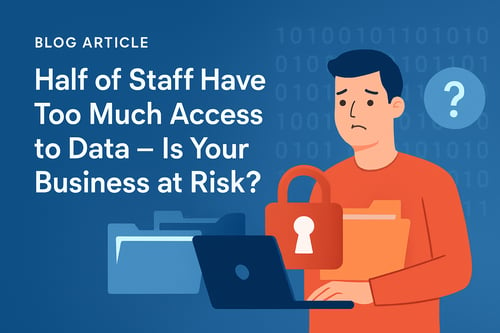Introducing the 12 Days of Phishmas: Your Christmas Cyber Safety Series
Most cyberattacks don’t start with hacking into your systems. They start with tricking your people.
This tactic is called social engineering. Instead of using advanced coding or brute-force attacks, cybercriminals manipulate human behavior — convincing someone to click a link, give away a password, or transfer money — often without even realizing it.
The results can be just as damaging (if not worse) than a technical breach.
What Is Social Engineering?
Social engineering is when someone uses deception or psychological tricks to get employees to hand over information or take risky actions. You’ve likely heard of phishing — that’s one example. Other forms include baiting (offering fake rewards), impersonating someone in authority, or even physically “tailgating” into your building.
The end goal is always the same: fooling someone into doing something they shouldn’t.
Why These Attacks Work So Well
Hackers don’t just guess — they exploit how people naturally think and react.
Here are some common ways they do it:
Pretending to be the boss: The attacker poses as a manager or executive and asks for something urgent — like transferring money or sharing credentials.
Example: “Can you process this payment before 11 AM and let me know once it’s done?”
Creating a false sense of urgency: They pressure people to act fast, making them feel like there’s no time to think.
Example: “Your account will be locked in 10 minutes — click here to stop it.”
Using fear to cause panic: Scary messages about account breaches or lost data make people act without verifying.
Example: “There’s been suspicious activity on your account. Click here to secure it.”
Tempting with rewards: Fake offers for refunds, prizes, or cashback make people curious or greedy.
Example: “You’re eligible for a $100 rebate. Claim now.”
What makes these so dangerous is that they often look completely normal — like any other business email or message.
How to Protect Your Business
You don’t need fancy software to block social engineering. You need awareness, smart habits, and a few key tools.
Here’s what works:
- Educate your team regularly
Train staff to recognise red flags like urgent requests, unknown links, or pressure to act quickly. The more familiar they are with these tactics, the less likely they are to fall for them. - Verify anything unusual
If someone asks for sensitive info, bank details, or login credentials — verify it using a trusted method. That could be a direct phone call or a face-to-face chat (not replying to the email). - Encourage people to slow down
Many attacks succeed because people rush. Let your team know it’s OK — and smart — to pause and double-check. - Use Multi-Factor Authentication (MFA)
Adding an extra login step (like a code sent to your phone) helps block attackers even if they get your password. - Make reporting easy
Create a simple way for employees to flag suspicious emails or calls. Early alerts can prevent major issues.
Don’t Wait Until It’s Too Late
The best time to improve your cybersecurity is before something happens.
Start with a conversation. If you’d like help training your team or strengthening your protection, we’re here to support you. Book a free consultation with our team and let’s make sure your business is ready for whatever comes next — even if it looks like just another email.
Tags:





